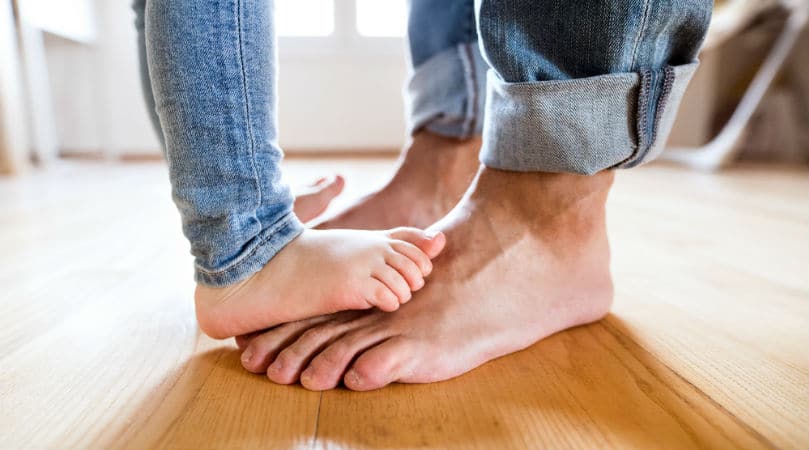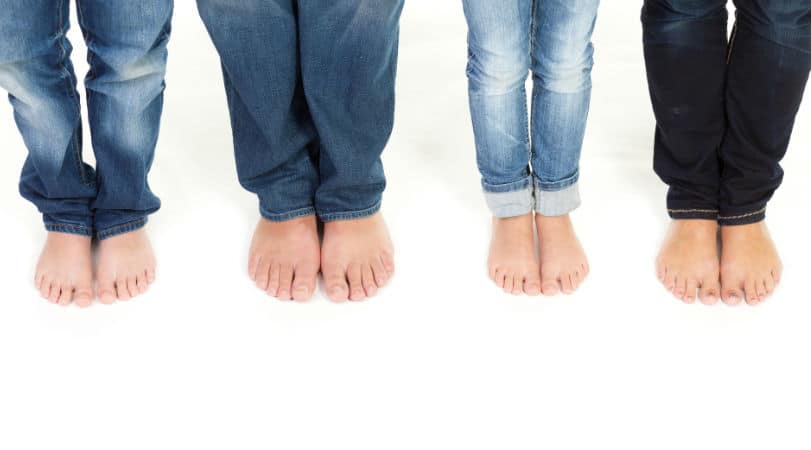Foot Problems: Nature vs Nurture
Despite our best efforts, sometimes it can be almost impossible to prevent certain foot conditions. Why? Because of your genetics.
Yes, you may hope to inherit your dad’s height or your mom’s beautiful hair – but whether you do or not is up to genetics. In fact, what you are likely to inherit from your parents is their foot problems. And, we know that this may not be as desirable as having high metabolism or blue eyes, but knowing that you are highly susceptible to bunions, flat feet and other foot issues can help you lessen their severity.
So, although you can blame your DNA, you can also do something about it!
That is why it is so important for you to be aware of any hereditary foot or ankle conditions your parents may have – which, in turn, you might inherit – and keep an eye out for any warning symptoms. Poor foot care habits can quickly worsen problems which you have unfortunately inherited. And, like most health problems, early detection is key to successful treatment.
All in all, combining faulty genetics and poor foot care habits can be a recipe for disaster. So, if you are likely to develop foot problems due to your genetic makeup, then you should double up on the precautionary measures to keep your feet healthy and happy.
In this blog, you will find information on some of the most common hereditary foot problems, how to best treat them, and how to prevent these conditions from worsening or even happening at all.
Common Hereditary Foot Conditions
Here are some fun facts you may not know: There are 38 muscles in your feet. These make up approximately 25 percent of the muscles in your entire body and they absorb more than 1,000 pounds of force every day!
That said, when foot problems are part of your DNA and you neglect your feet, is there any wonder why they hurt?
Here at Southern California Foot & Ankle Specialist we think it makes complete sense.
Some of the most common hereditary foot conditions are listed below:
- Flat feet. This condition causes you to have minimal or no arch support. In some cases, you may never experience any kind of pain. If your case is more severe, then you may find walking extremely difficult. Because of the lack of support, issues can extend beyond the arches into other parts of your body, including the knees and even back areas.
- This condition is often linked to flat feet and affects 30 percent of Americans today. A bunion is essentially a bony bump that forms on the joint at the base of your big toe. This happens when your big toe pushes against its neighboring toe, forcing the joint of your big toe to get bigger and stick out.
- Hammertoe and mallet toe are foot deformities that occur due to an imbalance in the muscles, tendons or ligaments that normally hold the toe straight and in place. A hammertoe has an abnormal bend in the middle joint of a toe. This type of condition normally occurs in your second, third and fourth toes.
If you have any of these conditions, there is no need to panic! There are plenty of things you can do to treat these conditions and help keep them from becoming a detrimental part of your life.
How to Manage Hereditary Foot Conditions
Below are some tips on how to manage common hereditary foot conditions:
- Wear the right shoes. You should avoid wearing high heeled shoes whenever possible. Instead, opt for footwear that is comfortable and supportive. Purchase shoes that have plenty of room to move your toes around freely, enough arch support, and heel protection.
- Consider orthotics. These can provide the extra comfort and support you may have difficulty finding in shoes. Custom orthotics in particular are your best choice – they can provide you with the specific support you need to treat and prevent your specific condition.
- Perform the right stretches/exercises. This is true rather you engage in sports activities or not. Light stretching will help strengthen and condition you bones, muscles and tendons.
- Avoid high-impact activities. You should shy away from activities like running as these can be seriously detrimental to a foot condition you already have or are prone to developing. Instead, try swimming or walking.
- Ice and massage painful areas. If you begin to feel discomfort, then you can try gently massaging the area in pain and applying ice. Keep in mind that you should never apply ice directly to the skin – use a towel for protection.
- Take over-the-counter medication. Ibuprofen and other nonsteroidal anti-inflammatory medications are a good option for relieving any pain you may be experiencing. However, if your discomfort does not subside within 24hrs, then it is best to seek advice from a podiatrist.
- Visit a podiatrist. The truth is that you shouldn’t wait to feel pain in order to finally come visit us. If you know foot problems are part of your genetic structure, then having a podiatrist as part of your health plan is a must.
The bottom line is that the perfect combination of treatment and prevention is to wear the right appropriate footwear and maintain close podiatric care. And the good news is that we can help you with that!
Contact Us Today!
So, while you can’t choose your genetic makeup, we can help you manage hereditary foot conditions so you can maintain a healthy lifestyle for as long as possible.
But you must be the one to take initiative – just because you were born this way doesn’t mean there is nothing you can do about it. If your feet start to bother you, don’t wait for the worst-case scenario to happen.
Instead, give Southern California Foot & Ankle Specialists a call at (949) 364-9255 and schedule an appointment with one of our doctors. Or, if you wish, you can also request an appointment online via our handy contact form.


